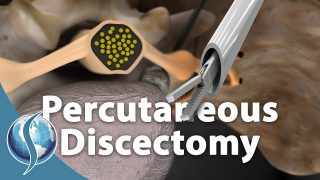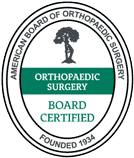Repeat Surgery After Cervical Discectomy and Fusion
Traditionally, spinal surgery had a bad reputation. But, epidemiological studies have demonstrated efficacy of certain procedures. Recent analysis of the SPORT data indicates that for a matched population of patients with symptomatic disk herniations there are better long term outcomes for the surgical patient.
Still, there is the constant fear of spinal surgery leading to additional surgery in the future. One of the more successful spinal surgeries is Anterior Cervical Discectomy and fusion. In general, these patients have not responded to non-surgical means, and therefore elect to undergo the procedure for relief of arm radicular pain. The success rates are variable, but the general concensus is improvement of the pain in greater than 90% of the patients. The concern however, is the long term effects of fusion on the levels above or below the fused level(s). The development of problems is called Adjacent Segment Disease (ASD), and with that concern, there have been a tremendous effort to develop artificial disc replacements in the hope of avoiding ASD and subsequent surgery. Thus far, the accumulated data has not been clear about the benefits of artificial disk replacements, although some studies do show an advantage. Unfortunately, other studies do not show less rates of subsequent surgery. As stated above, the use of these devices are still too early in its history to know if there is a long term advantage.
But, the real story is the rate of developing ASD to the point of having additional surgery. In the Spine January 15 2014 article above, 888 patients who underwent Anterior Cervical Discectomy with Fusion over a 20 year period was followed for the development of surgically significant ASD. 108 had repeat surgery. That is about 12.2%. The study also followed these 108 patients, and about 25% of these patients needed another surgery.
While this is really an epidemiologic study, at least in this series of consecutive patients, we do have some numbers to compare. We can draw some general ideas about the incidence of additional surgery. But, we cannot know if there were other factors that lead to this incidence. For example, was the repeat surgery group of patients associated with a certain type of cervical plating and technique? Some studies indicate a longer plate that encroaches on the adjacent disk levels can lead to accelerated disk degeneration. Do the patients with ASD have any other factor such as age, weight, medical comorbidities that will effect the development of ASD?
But, the study is very useful in that I can tell my anterior cervical discectomy and fusion patients, in general there is a 10-15% incidence of the need for further surgery in the future. At this time, I cannot tell them if Artificial Disk replacements can decrease the rate of additional surgery. But, there are some compelling arguements to the advance of artifical disk replacements in younger patients with healthy bone stock.
Citations
- Arts MP, Brand R, van den Akker E, Koes BW, Peul WC. The NEtherlands Cervical Kinematics (NECK) trial. Cost-effectiveness of anterior cervical discectomy with or without interbody fusion and arthroplasty in the treatment of cervical disc herniation; a double-blind randomised multicenter study. BMC Musculoskelet Disord. 2010 Jun 16;11:122. PubMed PMID: 20553591
- Hisey MS, Bae HW, Davis R, Gaede S, Hoffman G, Kim K, Nunley PD, Peterson D, Rashbaum R, Stokes J. Multi-center, prospective, randomized, controlled investigational device exemption clinical trial comparing Mobi-C Cervical Artificial Disc to anterior discectomy and fusion in the treatment of symptomatic degenerative disc disease in the cervical spine. Int J Spine Surg. 2014;8 PubMed PMID: 25694918
Last modified: January 5, 2018









